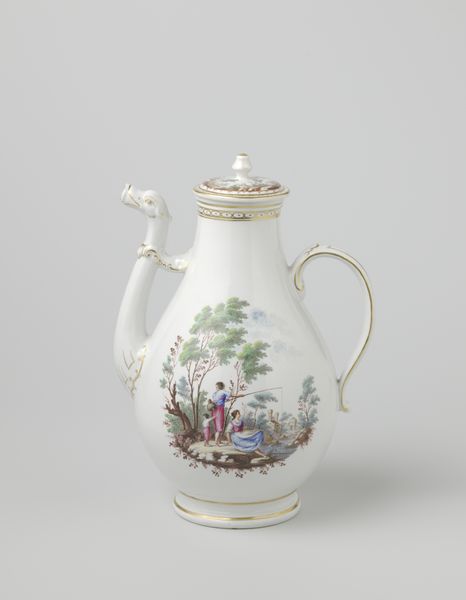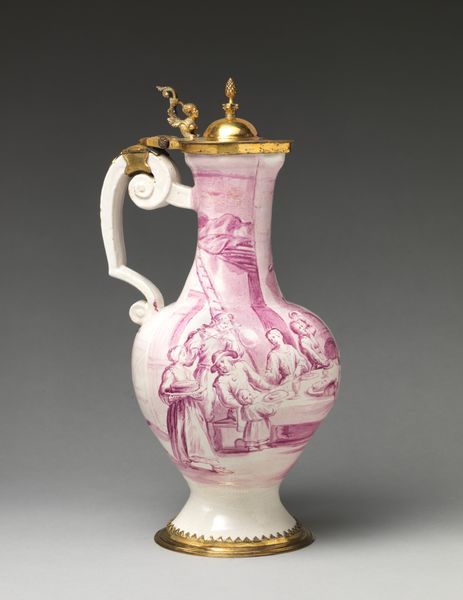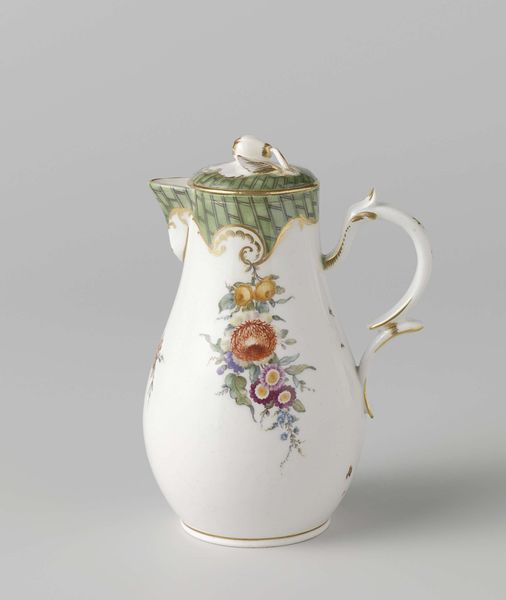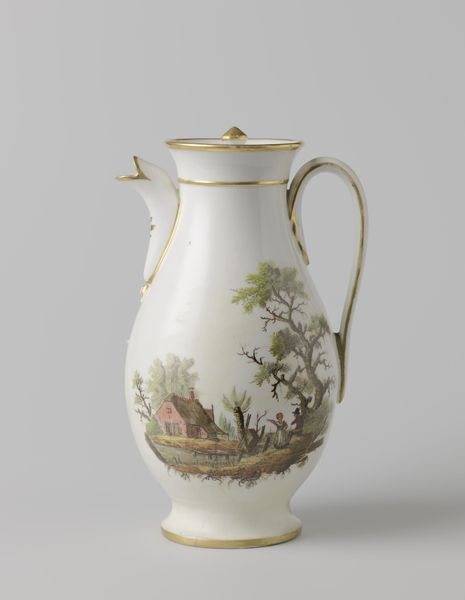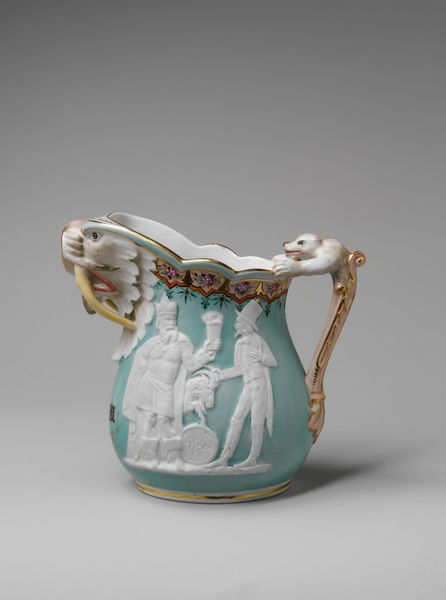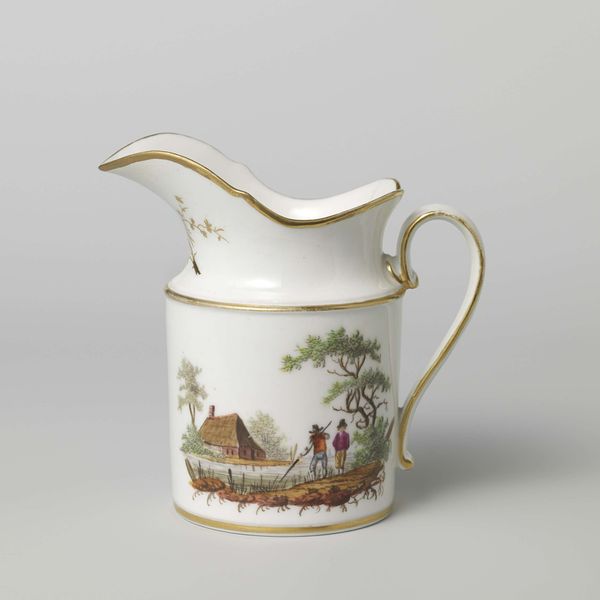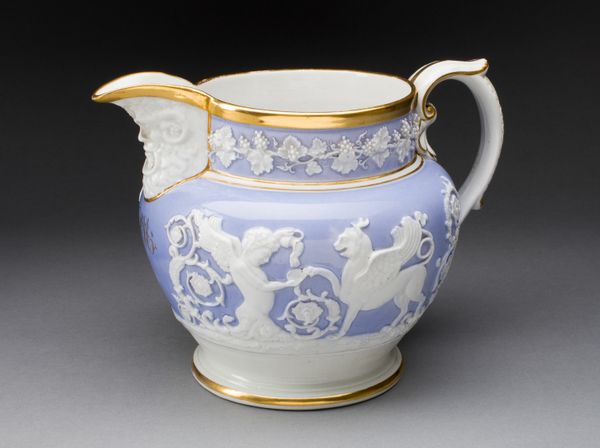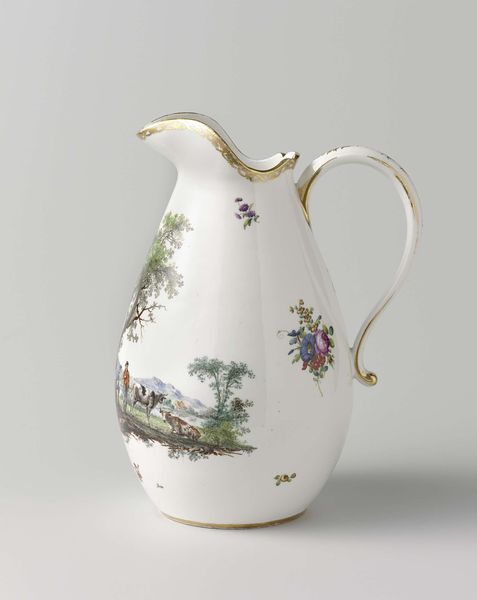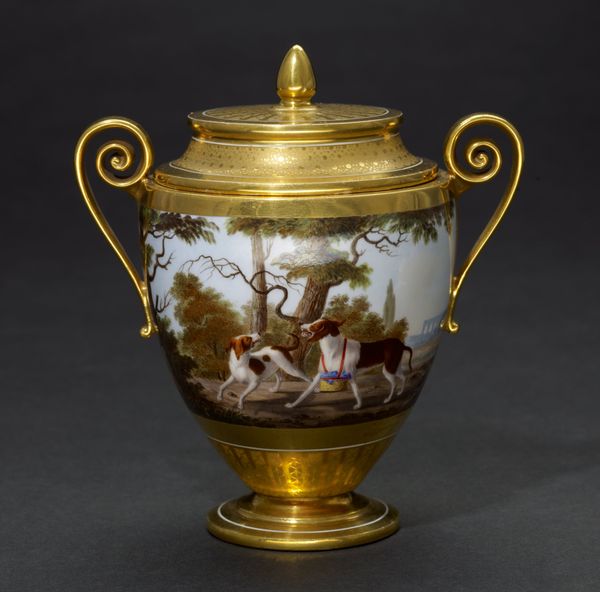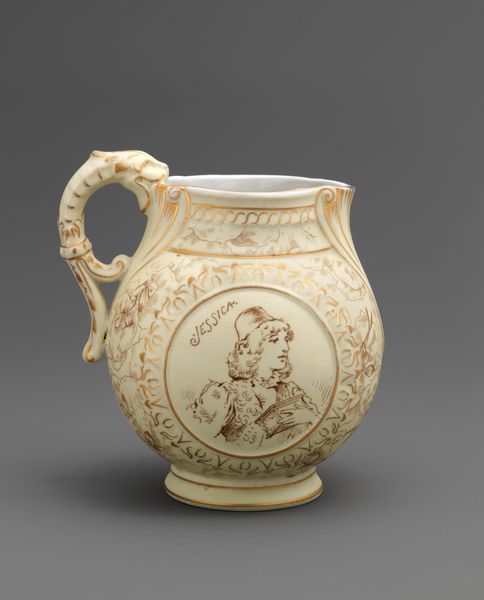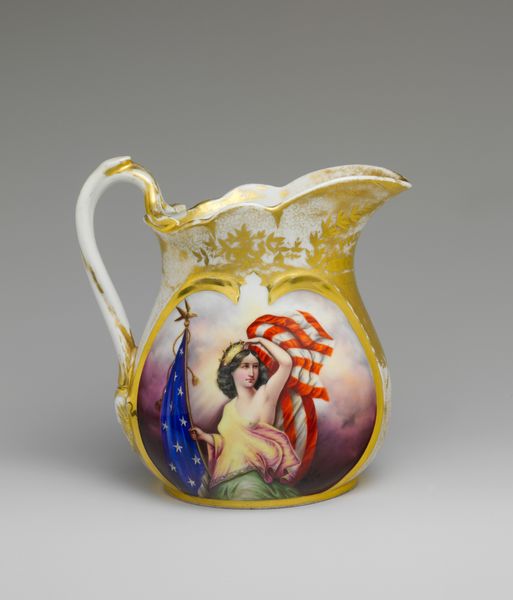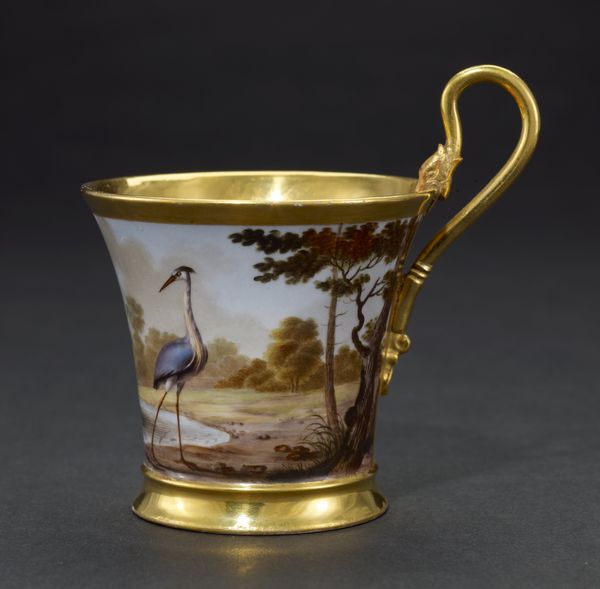
Dimensions: Height: 7 5/8 in. (19.4 cm)
Copyright: Public Domain
Editor: So, this porcelain jug, created in 1855 by George Edward Eyre, shows a scene in monochrome with red and gold embellishments. The depicted scene is quite somber. What do you see when you look at it? Curator: Well, immediately, I'm struck by the contrast between the high-art subject matter—the allegorical angel and narrative scene—and the mundane function of the object. A jug. Something mass-producible. The decorative-art style challenges traditional hierarchies. Editor: How so? Curator: Porcelain, historically prized, became increasingly accessible during the 19th century with advancements in industrial production. This piece blurs the lines between fine art and decorative craft, prompting us to question the social context of art production and consumption. Who was buying these jugs, and how did this imagery appeal to them? Was it meant for everyday use, or as a display of wealth and taste, mimicking higher forms of art? The scenes are possibly printed transferware which was an early process to add printed designs to ceramics through industrial printing. This raises interesting questions about artistic labor and its accessibility through reproduction. Editor: That's a really interesting point – how the process and material change the perception. I hadn't thought of the accessibility aspect. Curator: Exactly! Consider also the gold trim. It is both beautiful and serves as economic indicator about the item and the owner, if displayed publicly. Editor: I never would have looked that closely at a jug! I'm now curious about the whole porcelain industry in that period. Curator: It's a perfect example of how even the most seemingly decorative objects can be rich with meaning when we consider their materials and production.
Comments
No comments
Be the first to comment and join the conversation on the ultimate creative platform.
